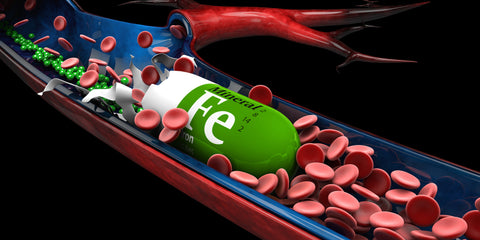The skin and the most common skin conditions
Far from being an inactive covering for the body internal organs, the skin is an intricate system of nerves, glands and cell layers that play a fundamental role in overall health and well-being. Being the largest organ of the body, the skin is responsible for temperature control, protection, excretion of toxins and sensations of touch, heat, and cold.
Skin disease is one of the most common human illnesses. It pervades all cultures, occurs at all ages, and affects between 30% and 70% of individuals (Scholfield et al., 2009). Skin conditions including acne, fungal and subcutaneous diseases were noted to be in the top 10 most prevalent diseases worldwide in 2014 (Hay et al., 2014). Moreover, skin conditions such as: atopic dermatitis, eczema, psoriasis and impetigo have been significantly on the rise in the last few years (Scholfield et al., 2016). Acne affects nearly 80 percent of all people between ages 11 and 30 in Western cultures (Scholfield et al., 2016). Researchers have found that atopic dermatitis is three times more prevalent today (Murray et al., 2016); and prevalence of eczema and psoriasis was identified doubled between 1995 and 2008 (Hay et al., 2014).
The food we eat is a trigger for developing skin conditions
The food we eat could have great impact on the risk of developing skin conditions, by triggering internal inflammatory processes. Dietary habits such as consumption of grains (wheat/gluten), sweet and sugary foods could contribute to the rise of various skin conditions. Wheat is one of the grains in many of the processed foods that interferes with a healthy complexion and contributes to psoriasis, eczema and acne outbreaks. Gluten would lead to more permeable gut, which would then allow proteins to get into the bloodstream that would otherwise have been excluded, sensitising the immune system and promoting inflammation, which would lead to acne (Cordain et al., 2002).
Wheat also affects both, blood sugar levels and the release of insulin. Wheat is a carbohydrate and once metabolized increases the blood glucose levels and triggers the release of insulin and insulin-like growth factor, called IGF-1. This growth factor could increase the secretion of male hormones, such as testosterone. The release of male hormones is not enough to trigger growth of secondary sex characteristics, such as hair or muscle growth, but may be enough to increase the secretion of sebum.
This is a greasy substance on the skin that traps acne-promoting bacteria. IGF-1 may also cause skin cells known as keratinocytes to multiply, a process associated with acne. On the other hand, glutinous proteins found in gluten could increase the permeability of the intestinal tract, sensitise the immune system and contribute to the worsening of acne. Individuals who have an increase in intestinal permeability may also experience a release of insulin when the immune system is activated by the bacteria and protein invaders.
This results in both, an increase of IGF-1 and an increase in the risk of developing insulin resistance and type 2 diabetes. A study found in the American Journal of Clinical Nutrition found young men who suffered from acne exhibited significant improvements in both acne and insulin sensitivity after eating a low-glycaemic diet for 12 weeks (Smith et al., 2007). Another study demonstrated that a high glycaemic diet and frequent dairy consumption are also linked to acne (Burris et al., 2013).

Some proteins in the wheat are known to trigger inflammatory processes in the body, and as a consequence lead to various skin conditions (Murray et al., 2016). Two substances found in wheat have been identified responsible for cellular changes in the body.
Gliadin is the primary immunotoxic protein found in wheat gluten that is among the most damaging to the health. Gliadin gives wheat bread its doughy texture and is capable of increasing the production of the intestinal protein zonulin, which in turn opens up gaps in the normally tight junctures between intestinal cells (enterocytes). Lectins are carbohydrate-binding proteins present in most plants.
Cereal grains and legumes have relatively high concentrations of a variety of lectins. Humans have been consuming grains for approximately 500 generations. However, in the recent years the human body fails to digest gluten completely, which is unlike any other protein.
Dr. Alessio Fasano, the director for Celiac Research and the chief of paediatric gastroenterology and nutrition at Massachusetts General Hospital said: “The immune system seems to see the gluten as a component of bacteria and deploys weapons to attack it, and creates some collateral damage we call inflammation."
The importance of having healthy gut when it comes to skin conditions
Having a healthy gut is crucial in the prevention of skin conditions. In other words, pure, flawless skin is a reflection of clean intestines. The liver, kidneys, adrenals and thyroid are also dependent on the condition of the small and large intestines. These two organs not only provide nutrients to other organs, but are also responsible for the removal of waste products from the body.
The small and large intestine release nutrients in the body and help to keep the food moving onward and out. Removing waste in a timely manner is crucial, when food waste meant for elimination remains in the intestines for too long could lead to thick, oily and blemished skin.
However, the consumption of gluten found in grains could increase the permeability of the intestinal tract, leading to the development of leaky gut. Gaps would develop between the cells that make up the lining of the intestines, allowing undigested food, bacteria and metabolic waste products to leak into the blood stream. Hence, the name leaky gut syndrome.
These foreign substances would challenge the immune system and increase inflammation in the body. Research published in ‘Gut Pathogens’ has theorised that an inflammatory response which starts in the gut could spread through the rest of the body and affect the skin (Bowe & Logan, 2011). This has been known as the gut-brain-skin connection.
Other factors that could influence skin conditions
In addition to eating a healthy diet, effectively addressing stress is another important aspect to be considered in preventing skin conditions. Previous research has found that life experiences and how an individual deals with them could have a great impact on skin’s health. Previous research has also determined that stress lessens the skin's ability to function properly, and that extended exposure to psychological stress could speed up the aging process of the cells and cause them to die at a faster rate than normal (Bowe & Logan, 2011).
On the other hand, new evidence in the field of epigenetics is also emerging, which emphasise the notion that environmental factors such as stress and diet could be directly responsible for the expression of the genes. According to ground-breaking research done by Bruce Lipton, PhD., a forerunner in the field of epigenetics and The New Biology, the genetic expression is ruled by the mind and emotions. In other words, being able to maintain a more positive outlook could influence the expression of the genes, and thus directly impact the health and appearance of the skin.
Protocol to effectively combat skin conditions
Making changes in the diet could have positive impact when dealing with skin conditions. For example, when dealing with eczema, foods that cause allergic reactions such as: eggs, dairy, soy, peanuts, fish, corn, tomatoes, citrus and gluten products should be avoided for a period of time, usually three to four weeks. This would enable to monitor symptoms; important to notice visible and non-visible changes. Additionally, in the presence of acne, gluten-containing grains and foods that contribute to insulin resistance (namely sugar) should be avoided. Instead, low-sugar and high-nutrient-dense fruits like berries should be included in the diet.
Alkalizing the body is also important when dealing with skin conditions. The pH balance is a key in skin conditions, as symptoms of acne, eczema and psoriasis often occur when the body’s pH is out of balance. A body too high in acid or too high in alkaline foods could cause eczema to flare. Additionally, too high acid environment could contribute to the outbreaks of more acne.
On the other hand, probiotics could give the immune system a boost and help when dealing with skin conditions. Probiotics or "good bacteria" could help soothe inflammation and stimulate the body to produce antibodies that are vital for preventing the body from overreacting to allergens. Hydration is another important factor. Drinking plenty of fresh, pure water every day would help hydrate the body and facilitate cell growth and regeneration, elimination of wastes, and sloughing away dead skin cells.
As mentioned earlier, stress could also cause acne through the gut-brain connection. Therefore, reducing the stress is important protocol to follow when dealing with skin conditions. Research done by dermatologists John Stokes and Donald Pillsbury suggested that emotions could alter the microflora in the intestines, which could therefore contribute to systemic inflammation that would exacerbate acne and other skin conditions (Cordain et al., 2002).
Vitamins for Healthy Skin
Hair, Skin & Nail Support | HealthAid
"Experimental studies show that psychological stress stagnates normal small intestinal transit time, encourages overgrowth of bacteria, and compromises the intestinal barrier. SIBO [small intestinal bacterial over growth] is strongly associated with depression and anxiety, while eradication of SIBO improves emotional symptoms. Although the frequency of SIBO in acne vulgaris has not yet been investigated, a recent report indicates that SIBO is 10 times more prevalent in those with acne rosacea vs. healthy controls. Correction of SIBO leads to marked clinical improvement in patients with rosacea." (Bowe & Logan, 2011)
Reference:
- Bowe, W.P., Logan, A.C (2011). Acne vulgaris, probiotics and the gut-brain-skin axis - back to the future. Gut Pathogens. 3 (11), 21-27.
- Burris, J., Woolf, K. et al. (2013). Acne: The Role of Medical Nutrition Therapy. Journal of the Academy of Nutrition and Dietetics. 113 (3), 416 – 430.
- Cordain, L., Hurtado, M. et al. (2002). Acne vulgaris: a disease of Western civilization. Journal of Clinical Dermatology. 138 (12), 1584-1590.
- Hay, R.J., Johns, N.E. et al. (2014). The Global Burden of Skin Disease in 2010: An Analysis of the Prevalence and Impact of Skin Conditions. Journal of Investigative Dermatology. 134 (6), 1527-1534.
- Murray, C.J.L., Richards, M.A., Newton J.N. et al. (2016). UK health performance: findings of the Global Burden of Disease Study 2016. Lancet. 23 (381), 997-1020.
- Scholfield, J.K., Grindlay D., Williams H.C. (2009). Skin Conditions in the UK: A Health Needs Assessment. University of Nottingham, Centre of Evidence Based Dermatology UK; Nottingham, UK.
- Smith, R.N., Mann, N.J. et al. (2007). A low-glycaemic-load diet improves symptoms in acne vulgaris patients: a randomized controlled trial. The American Journal of Clinical Nutrition. 86 (7), 107 – 115.
- Images: Soft skin photo created by master1305 - www.freepik.com
Any information or product suggested on this website is not intended to diagnose, treat, cure or prevent any medical condition. Never disregard medical advice or delay in seeking it because of something you have read on this website. Consult your primary healthcare physician before using any supplements or making any changes to your regime.





